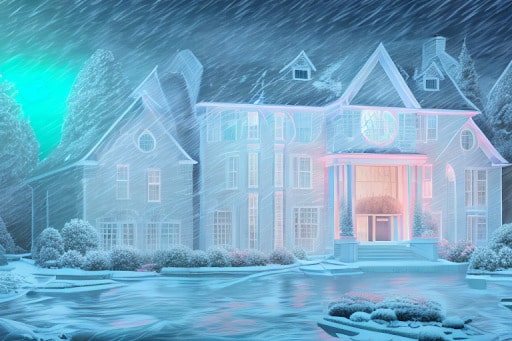Wood heat is a cost-effective way to heat a home, but getting hot air into every room can be problematic in multi-level homes. Some workarounds can be completed by the homeowner, while others require professional expertise. Utilize fans.
A wood-burning stove can save you money while also providing a warm atmosphere in your house. Two-story homes with the only heat source on the ground level, on the other hand, can be difficult to heat uniformly, necessitating a little imagination to guide wood-heated air into the rooms above.
You may heat the entire upstairs using fans or use fans to direct the heat from the wood burner to a single room. A fan installed high in a doorway or on the wall in the same room as the stove will direct hot air where it is needed.
Table of Contents
Determine Heat Rating Of Your Wood Stove
Wood stoves are evaluated for the amount of square footage they can efficiently heat with heat output. Many additional factors, however, can influence this computation. 50 to 60 BTU per square foot in colder climates may be required.
Older homes demand slightly more BTU, whereas newer, better-insulated homes require less. Square footage on both floors of a two-story residence should be measured.
Use Fans
Moving Heated Air Using Fans A properly placed floor fan will funnel hot air up the stairway, a box fan at the foot of the stairs will push air up the steps, and a ceiling fan towards the top of the stairs can be turned on the reverse to pull heated air even higher.
Also, it would help if you think twice before adding a wood or gas stove upstairs. The heat from a burner on the second floor does not travel downstairs. It’s fine to rely on heat from your duct system downstairs.
Ideally, you’ll have two zones, with the downstairs zone being used solely while heating with wood upstairs.
Maintain The Burning Level Of Wood In the Stove
Temperatures can be stabilized by keeping a wood fire blazing at a constant temperature. Getting the temperature back up is not easy when the fire goes out, and the higher rooms become cold. It is easier to maintain heat once the house has been heated rather than starting over with a frigid upper floor.
Install Appropriate Ventilation System
It may be possible to connect your wood stove to the air ducts if your home has central air conditioning. A professional should make this adjustment unless you are an HVAC specialist. Most modern wood stoves feature ports near the back of the stove that can be used to connect a pipe to the ventilation system.
To prevent smoke from entering the upstairs rooms, you must install a filter while being careful not to tap into the air return system mistakenly.
Hire Professionals For Appropriate Ventilation System Installation
Finally, big floor vents right above the stove could be constructed on the second story. Because two-story houses frequently have plumbing and power running between the ceiling of one story and the floor of another.
This is a job best left to the professionals. The upper floor is heated via vents. A professional should handle any essential HVAC adjustments, or vent installs between levels. Untrained people are attempting these tasks risk injuring themselves, causing carbon monoxide to build up in the house, or causing structural damage to the house.
House fires can be caused by wood stoves built incorrectly or without adequate clearance on all sides or lacking the required grade of heat-resistant piping. Always follow the instructions in your wood stove’s manual and seek professional advice if you make any changes.
Conclusion
Wood stoves are less expensive than forced-air heating systems, and wood is less expensive than electricity or gas. By minimizing your dependency on traditional electricity sources, wood heat can help you save money over time.
Wood stoves cannot heat a room. A wood stove cannot heat not only a room but also a full house. You may heat your entire property by combining back boiler installation with central heating or ducted hot air.





